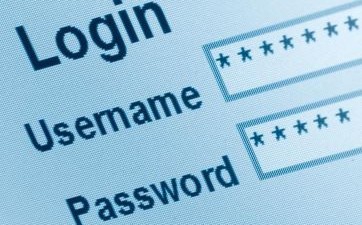Keeping Your Private Parts Private Online
April 9th, 2013. By Hunter West
 There is little doubt the evolution of communication towards electronic or social platforms such as email, Facebook, LinkedIn and Twitter has effectively taken over our lives. Social networking, while great for reconnecting with long-lost friends or career networking, can also carry substantial risk–and often the fallout is nothing short of devastating.
There is little doubt the evolution of communication towards electronic or social platforms such as email, Facebook, LinkedIn and Twitter has effectively taken over our lives. Social networking, while great for reconnecting with long-lost friends or career networking, can also carry substantial risk–and often the fallout is nothing short of devastating.
While figures are not yet available for 2012, The Wall Street Journal (WSJ 3/15/12) reported last year that incidents of identity theft increased 13 percent in 2011 over the same period the year before. That translates to 12 million Americans.
What’s worse, it can take, on average some 30 hours and about $500 to resolve online identity fraud, according to TransUnion, a credit-reporting firm.
Think of it. 30 hours represents almost an entire week’s worth of lost productivity – so the financial costs can be even higher. And beyond examples of simple identity theft, are cases that are far more complex and damaging, for which legal representation is often necessary.
As our use of smart communications technology and social media increases, it’s useful to be aware of who is at risk for identity theft: 7 percent of smartphone owners were victims of identity theft in 2011, and are considered one-third more likely to fall prey to identity theft than the general population.
The reason, is that smartphones are actually mini-computers–but users tend not to protect their smartphones with passwords and other security features, as they would their PCs or laptops. According to a recent survey, 62 percent of smartphone users fail to use a password to access their home screen.
You might be surprised to know that according to a survey conducted by Javelin Strategy & Research, the business social network LinkedIn had the highest identity-theft rate at ten percent, vs. five percent for the general population. The rate for Google+ users was 7 percent, 6.3 percent for Twitter and 5.7 percent amongst users Facebook. Note that these figures are all about a year old and are probably much higher today. Facebook, says Javelin, is probably the lowest due to the availability and awareness of those much-maligned but highly effective privacy settings.
On the other end of the scale, LinkedIn is probably high because users perceive LinkedIn as a business platform and take fewer precautions, given an assumption you are connecting with like-minded business people rather than spammers, or worse.
And here is another sobering thought–you will recall that large security breaches involving Sony, Epsilon and RSA together with several government entities in 2011 represented a whopping 67 percent increase over the same period in 2010.
Ways you can protect yourself include keeping your antivirus software updated on all devices, the consistent use of strong passwords (featuring a mix of letters, numbers and symbols), and the use of different passwords for each account. And avoid storing personal information on a mobile device. All it takes is the laying down of your Blackberry or iPhone for a split second in a crowded venue and suddenly, it’s gone – with all your personal information along for the ride.
Even emails can get you in trouble, by inadvertently hitting ‘Reply all’ instead of just ‘reply.’ In so doing you may have sent sensitive, hurtful or even libelous information out to the masses.
There is little doubt that electronic communication and social networking are here to stay, as is the growing e-commerce. Protecting your identity is of paramount importance.
-
Leave a Reply
Archive by Category
- Accidents (24)
- Airlines (9)
- Asbestos Mesothelioma (262)
- Automotive (25)
- Celebrity (14)
- Class Action (84)
- Complaints/Comments (15)
- Consumer Fraud (84)
- Contest (2)
- Court of Public Opinion (5)
- Crazy Sh*t Lawyers See (61)
- Criminal Law (4)
- Defective Products (111)
- DePuy ASR Hip Recall (2)
- Discrimination (22)
- Drugs/Medical (248)
- Elder Care Abuse (4)
- Emerging Issues (462)
- Employment (54)
- Environment (52)
- Financial (28)
- Food Illness (15)
- Human/Civil Rights (4)
- Insecurities (5)
- Insurance (16)
- Intellectual Property (16)
- Internet/E-commerce (19)
- lawsuits (161)
- Lawyers (20)
- Lawyers Giving Back (43)
- Lex Levity (10)
- Personal Injury (106)
- Pleading Ignorance (53)
- Real Estate (2)
- Recall (6)
- Scam (3)
- Securities (13)
- Settlement (81)
- Tort Reform (2)
- Totally Tortelicious (81)
- Veterans (11)
- Whistleblower (9)